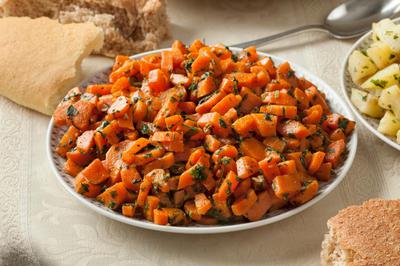Introduction: Exploring Sudanese Cuisine
Sudanese cuisine is a rich and diverse fusion of African, Middle Eastern, and Mediterranean flavors. With a variety of aromatic spices, fresh herbs, and unique ingredients, Sudanese cuisine offers a truly unique culinary experience. Sudanese cuisine is heavily influenced by the country’s location, which is situated between the Nile and the Red Sea, as well as its history of trade routes and cultural exchanges.
Aromatic Spices: Essential Ingredients in Sudanese Cooking
Aromatic spices are an essential component of Sudanese cuisine. The spices used in Sudanese cooking vary depending on the region, but some of the most common ones include cumin, coriander, cardamom, cinnamon, ginger, and turmeric. These spices are used to add depth, flavor, and complexity to dishes, and they are often toasted or dry-roasted before being ground to release their full flavor.
The Role of Condiments: Adding Flavor and Texture to Dishes
Condiments and sauces play a vital role in Sudanese cuisine, adding flavor, texture, and complexity to dishes. Sudanese condiments range from nutty and spicy to tangy and sweet, and they are used to complement meats, vegetables, and grains. Some of the most popular Sudanese condiments include peanut butter, hilumur, and dukkah, a mixture of ground nuts and spices.
Popular Sudanese Condiments: From Peanut Butter to Hilumur
Peanut butter, also known as sharmouta, is a popular condiment in Sudanese cuisine. It is used in a variety of dishes, including stews, sauces, and marinades. Hilumur, a tangy and spicy sauce made with tomatoes, onions, and chili peppers, is another popular Sudanese condiment. It is often served with grilled meats and vegetables. Dukkah, a mixture of ground nuts and spices, is also a popular condiment in Sudanese cuisine. It is typically eaten with bread and olive oil.
A Closer Look at Hilumur: A Tangy and Spicy Sudanese Sauce
Hilumur is a tangy and spicy sauce that is a staple in Sudanese cuisine. It is made with tomatoes, onions, chili peppers, and a variety of spices. The sauce is typically cooked slowly over low heat to allow the flavors to meld together. It is often served with grilled meats and vegetables, and it adds a bright and flavorful kick to any dish.
Conclusion: Embracing the Rich Diversity of Sudanese Cuisine
Sudanese cuisine is a vibrant and diverse mix of flavors, textures, and ingredients. From aromatic spices to rich condiments and sauces, Sudanese cuisine offers a unique culinary experience that is not to be missed. Whether you’re trying peanut butter for the first time or indulging in the tangy and spicy flavors of hilumur, Sudanese cuisine is sure to delight and surprise your taste buds. So go ahead and explore the rich diversity of Sudanese cuisine – you won’t be disappointed!

